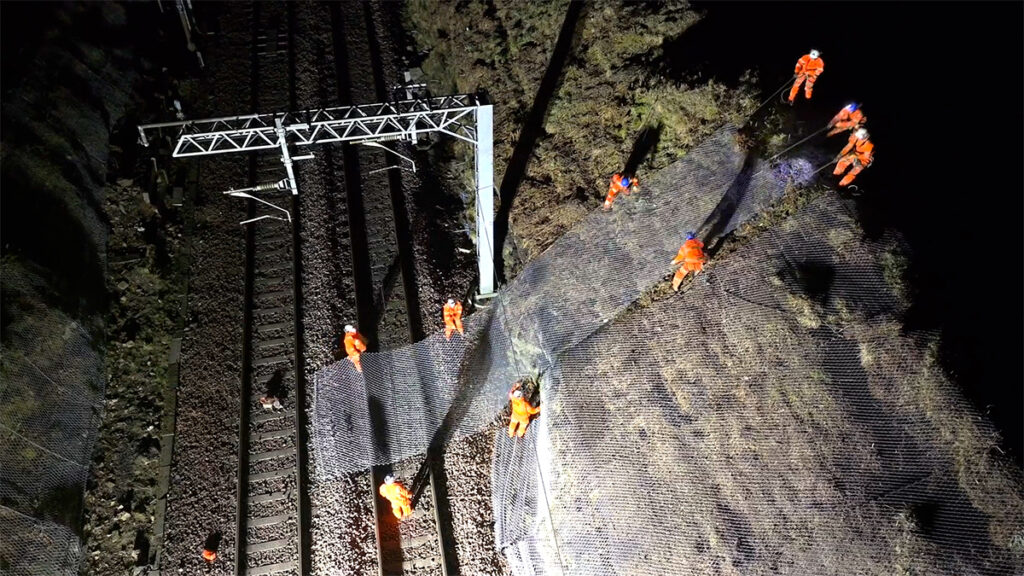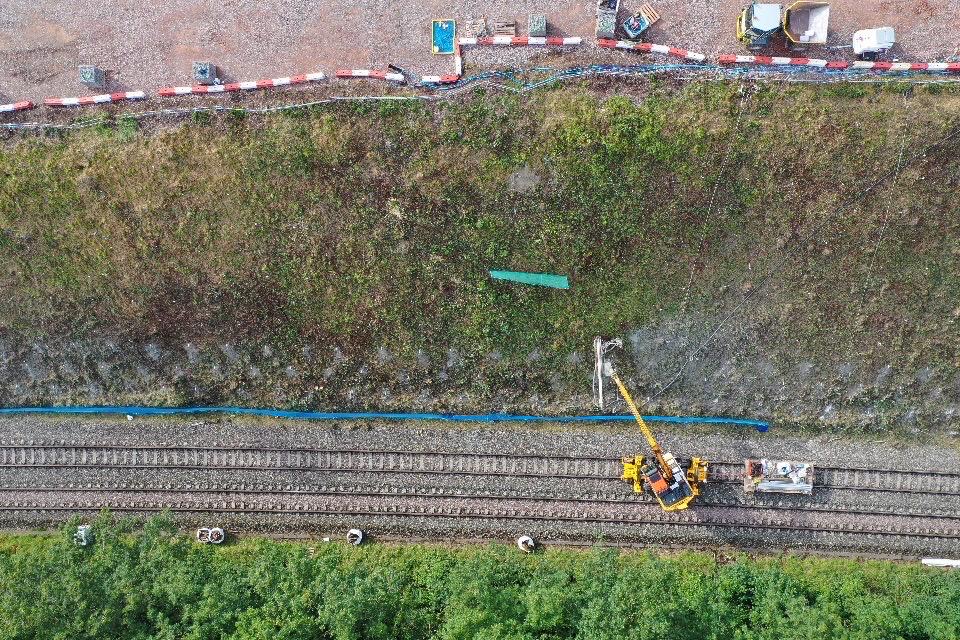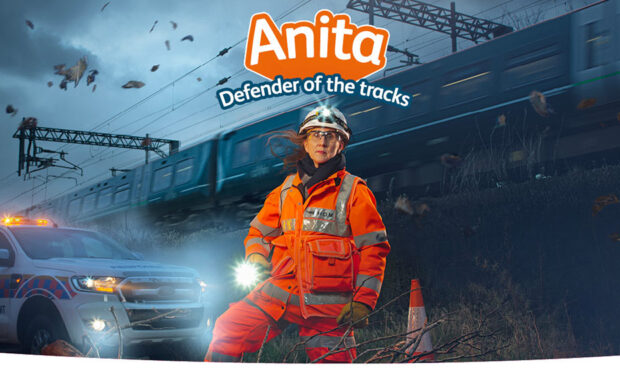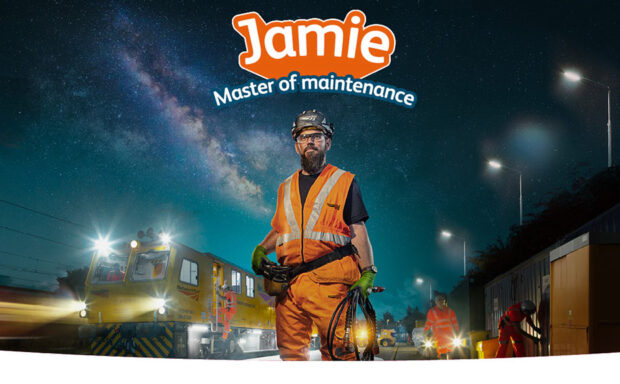We’re working tirelessly to make our railway more resilient against landslips – giving freight and you better, more reliable and smoother journeys.
Delays and line closures
Landslips can seriously affect freight and train services – causing severe delays and line closures. Landslips caused over 214,000 minutes of train delays last year, over 238,000 minutes in 2022 and over 206,000 minutes in 2021.
Landslips happen when soil, rocks and earth fall onto and cover the track. This is often after long periods of heavy rain, when the ground becomes saturated – or completely ‘full’ – with water.
Clearing the track after a landslip is usually not enough either. The slope is permanently weakened because of the landslip and the chances of landslips re-occurring are much higher. We must also reinforce the ground.
Climate change means we’re experiencing extreme weather more frequently, including heavy and persistent rain. That’s why we’re acting now to strengthen our railway and make it more resilient against landslips.
Take a look at some of our biggest projects doing this …
East Coast Main Line
We’re investing £33m to prevent landslips on the East Coast Main Line at Browney Curve near Durham. It’s one of the biggest projects of its kind.
The railway here sits on top of an embankment making it more vulnerable to landslips. The land beneath the tracks has in fact been slowly moving over time. This makes it an active landslip.
The chances of the landslip getting bigger and affecting your services are much higher without our intervention. So, hundreds of our engineers have worked since September 2023 to stabilise over one kilometre of the railway here.
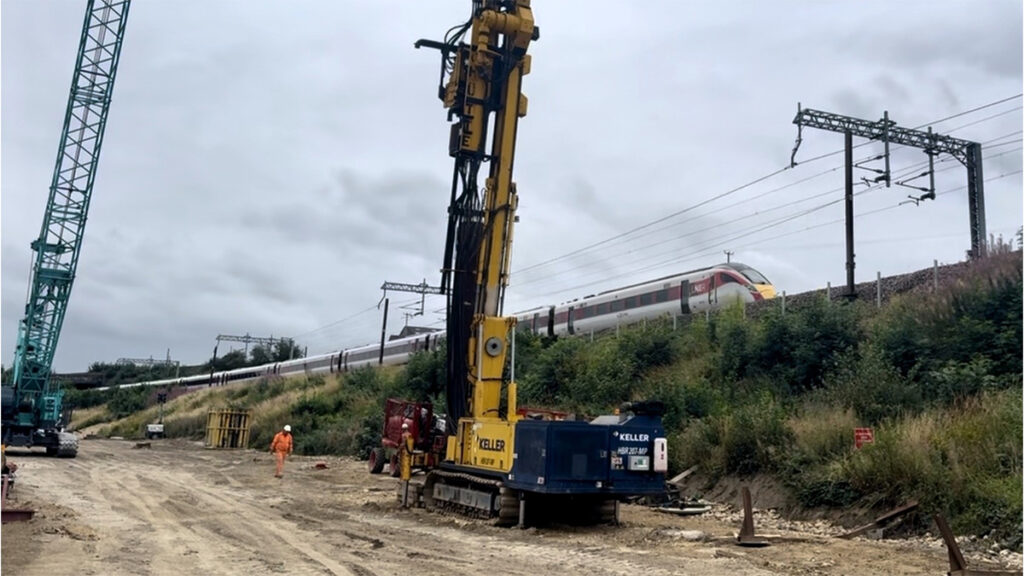
We are:
- installing 529 piles deep into the ground
- improving drainage to stop soil becoming waterlogged
- widening the embankment so it’s less steep and more stable
- planting new trees and wildflower meadows to strengthen the ground and benefit nature.
We’re on track to finish later this autumn.
Jon Calvert, a portfolio delivery director at Network Rail, said:“Keeping the railway running safely and smoothly is what we’re here to do, and it’s paramount for us to take proactive action like here at Browney Curve to prevent problems before they happen.”
The Severn Estuary Line
Our teams are also working on the railway between Newport and Gloucester. It’s part of another multi-million-pound resilience programme to prevent landslips on the Severn Estuary Line.
The steep slopes and the nearby Severn Estuary make for a challenging environment. Landslips have occurred in the past, leading to long closures and delays. They’ve also impacted freight services including the ‘Tesco trains’ that frequently use the route.
So, we began a five-year resilience programme in July 2022.
Phase one and two strengthened a three-mile stretch of railway between Lydney and Gloucester. We removed 15,000 cubed metres of fallen rock and earth from the slopes. And installed about 45,000 square metres of netting.
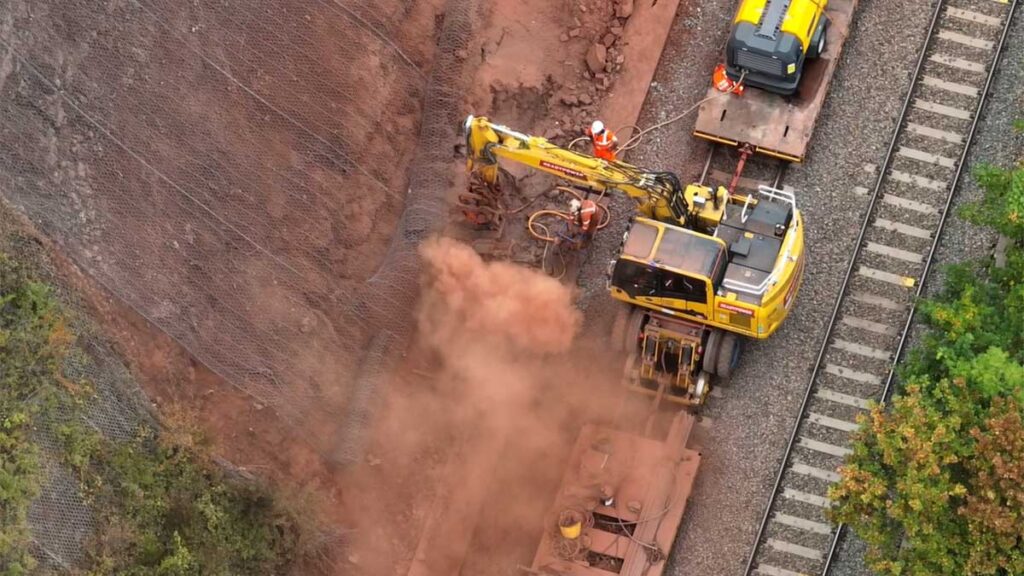
This year’s work focusses on an area between Purton and Awre in the Forest of Dean. We’re drilling nearly 4,000 holes and installing rock bolts and rockfall netting to fully stabilise more than 17,500 square metres of the railway.
Nick Millington, the Wales and Borders route director at Network Rail, said: “The investment we have made – and are continuing to make – will mean fewer closures and speed restrictions in the future, providing passengers and freight customers with a more reliable service.”
Edinburgh to Glasgow Main Line
We finished our resilience work on the railway between Croy and Dullatur in Glasgow this March. The £3.5m programme helped protect the Edinburgh to Glasgow Main Line against landslips.
The line was originally built within a steep cutting in 1842 by the Victorians. We frequently had to slow trains down during periods of extreme rainfall.
Our resilience work included:
- clearing over 5,000 square metres of vegetation on the cutting
- upgrading about 1km of drainage
- installing 6,500 square meters of rock netting and 500 soil nails over the cleared cutting
